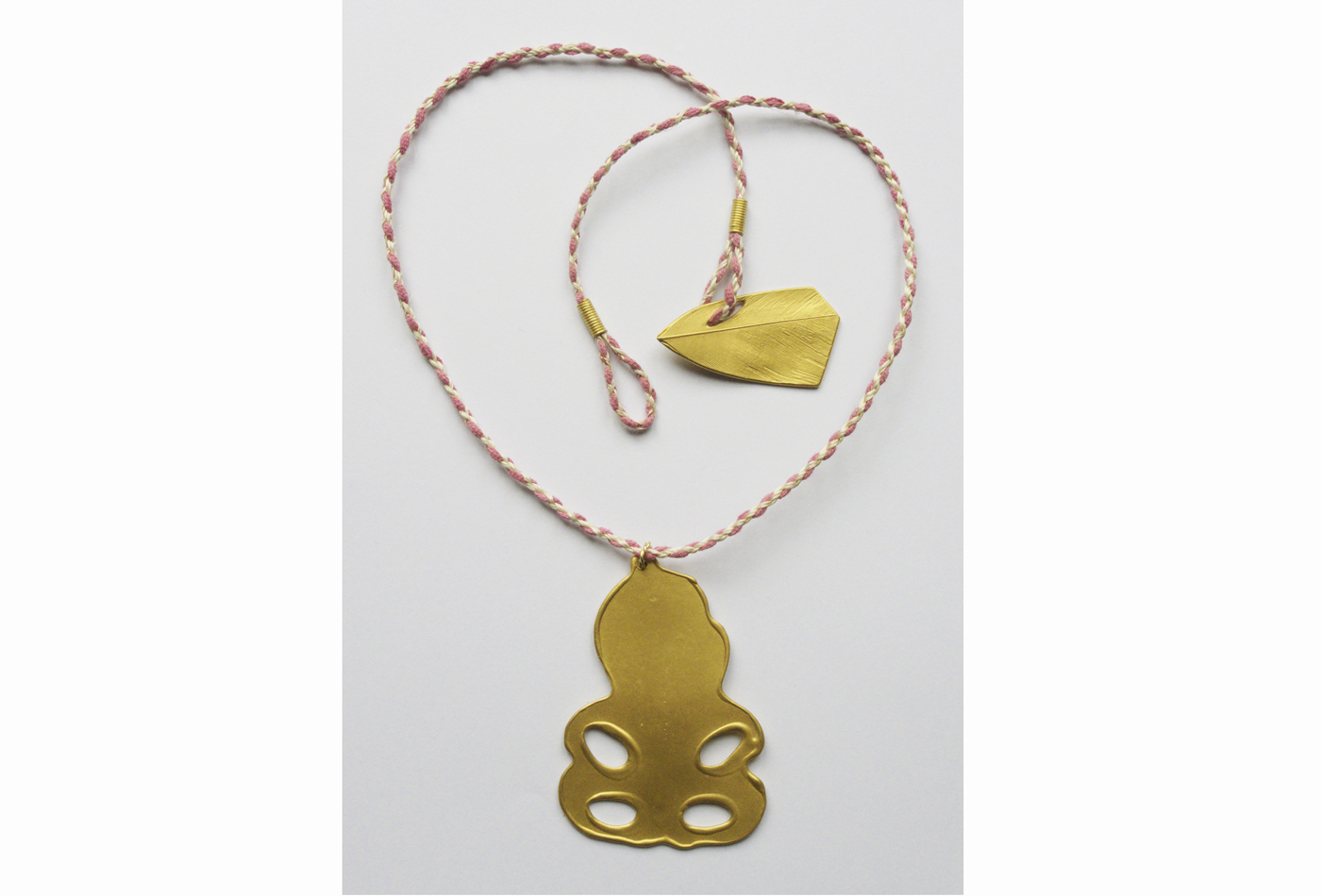

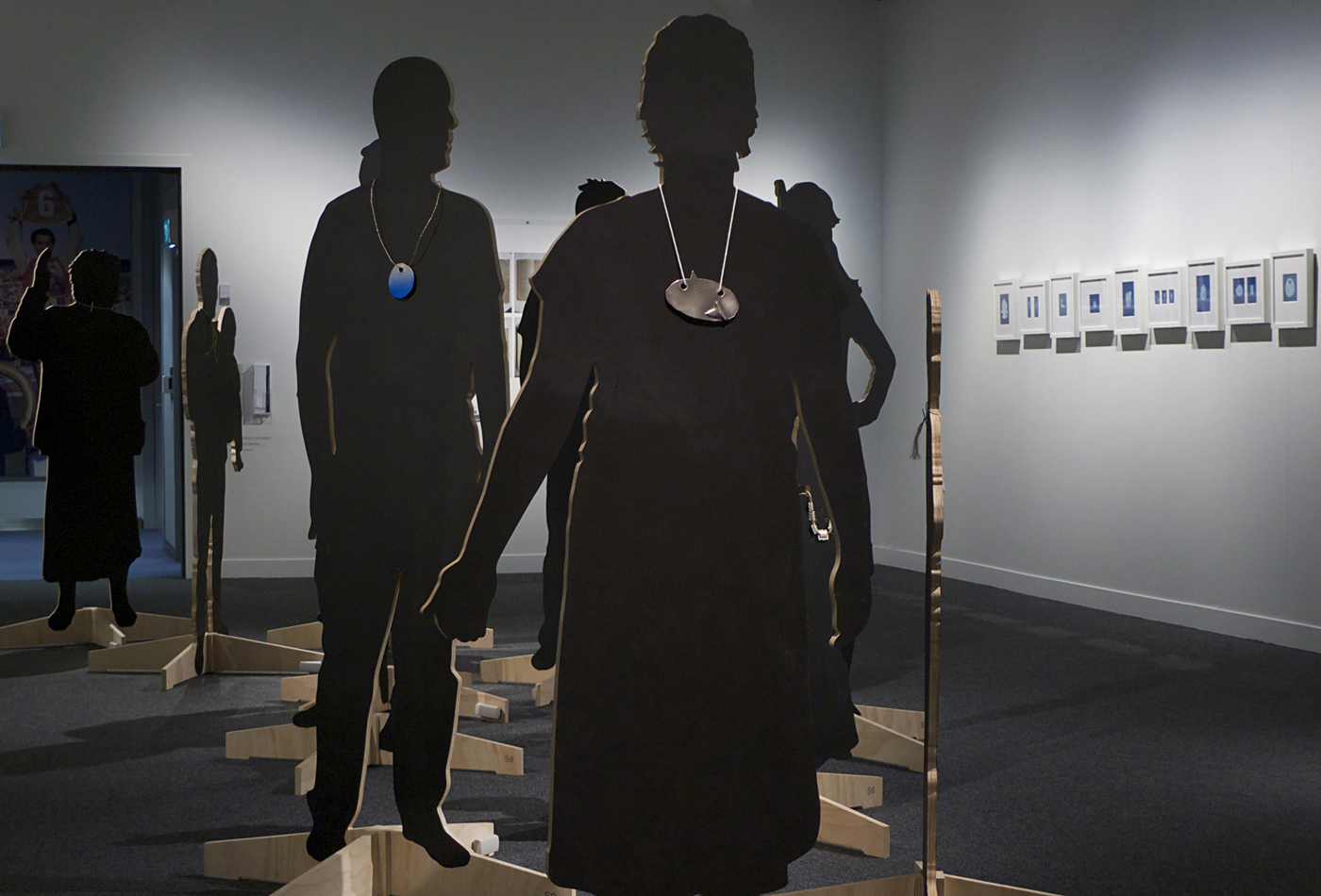
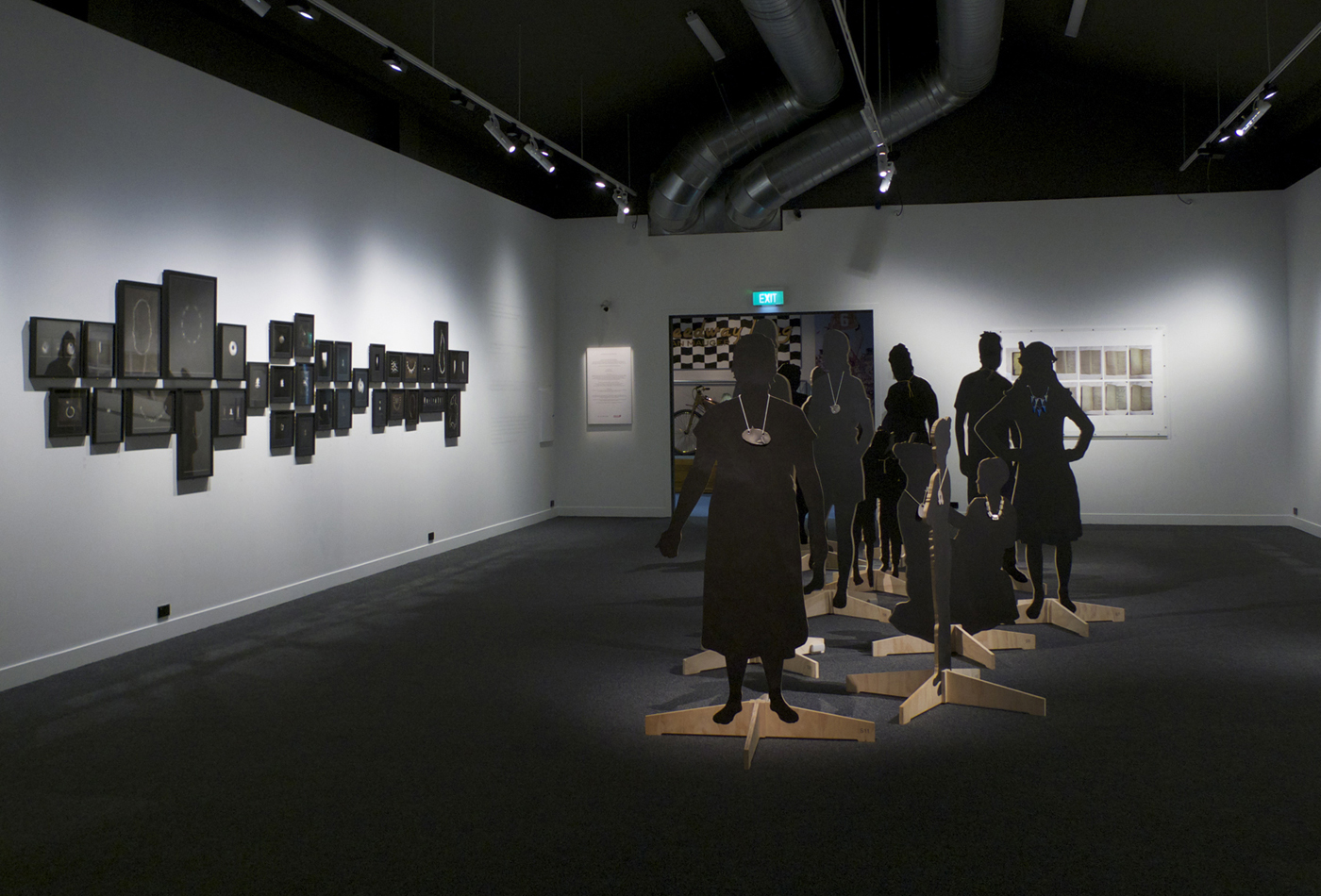
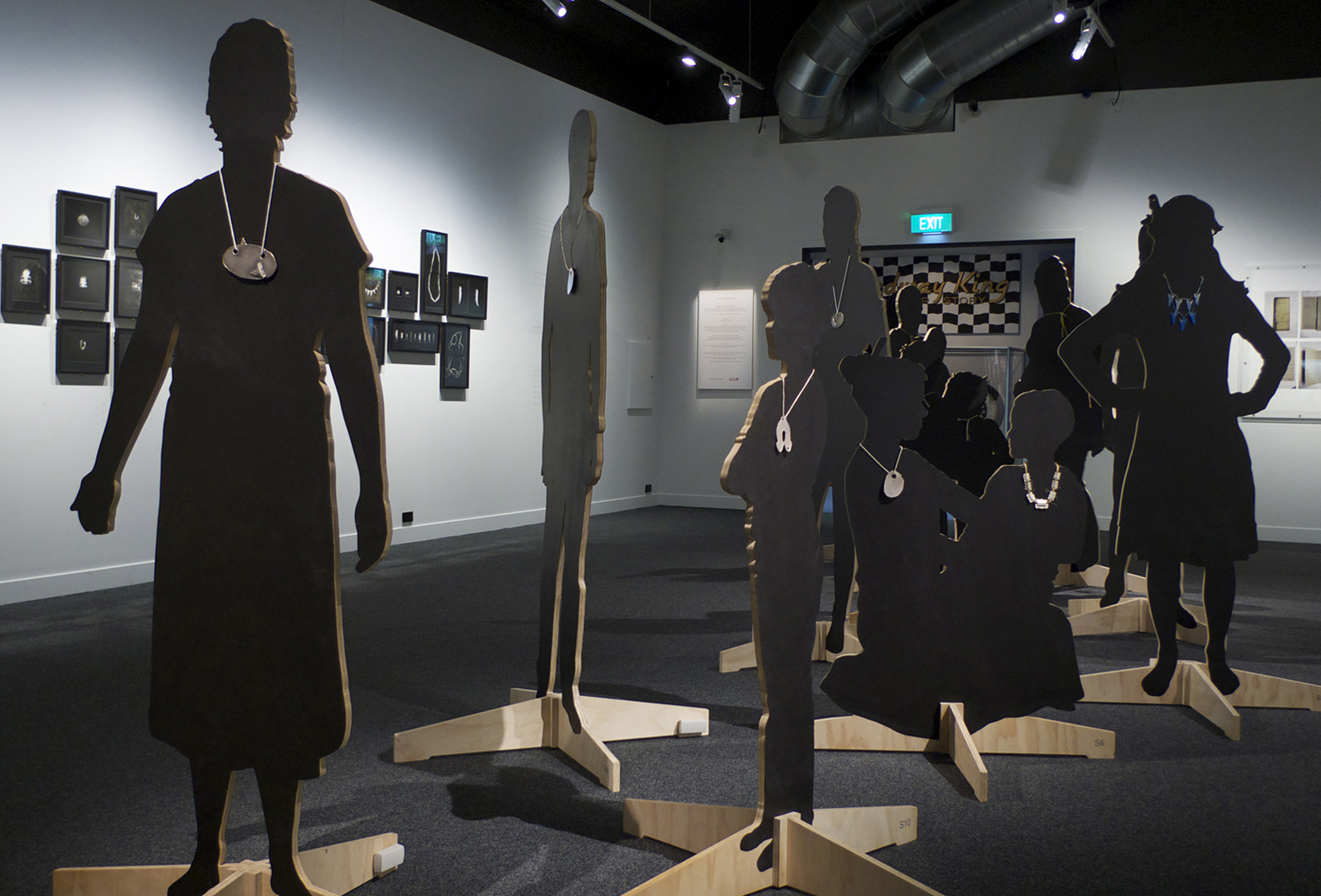
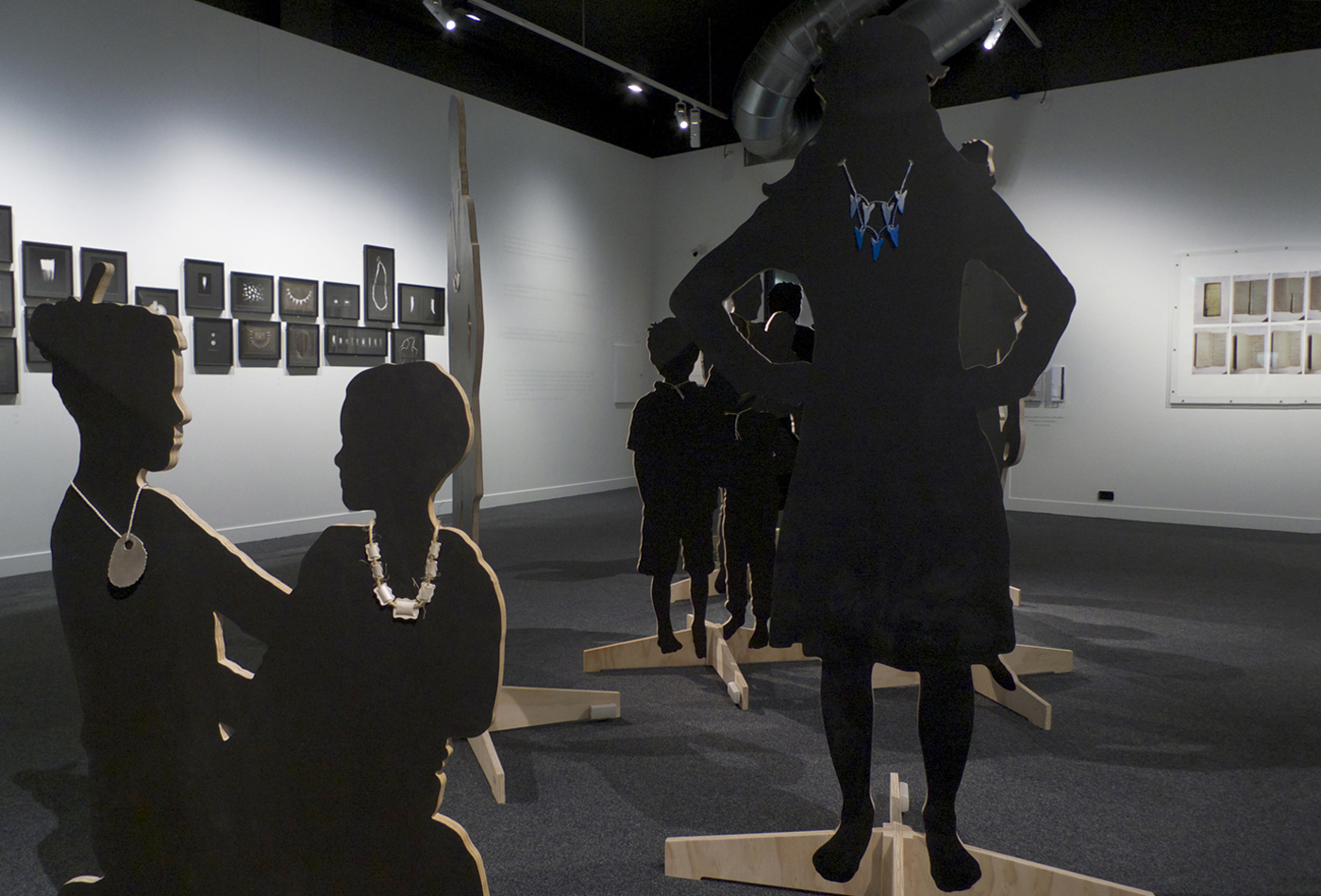
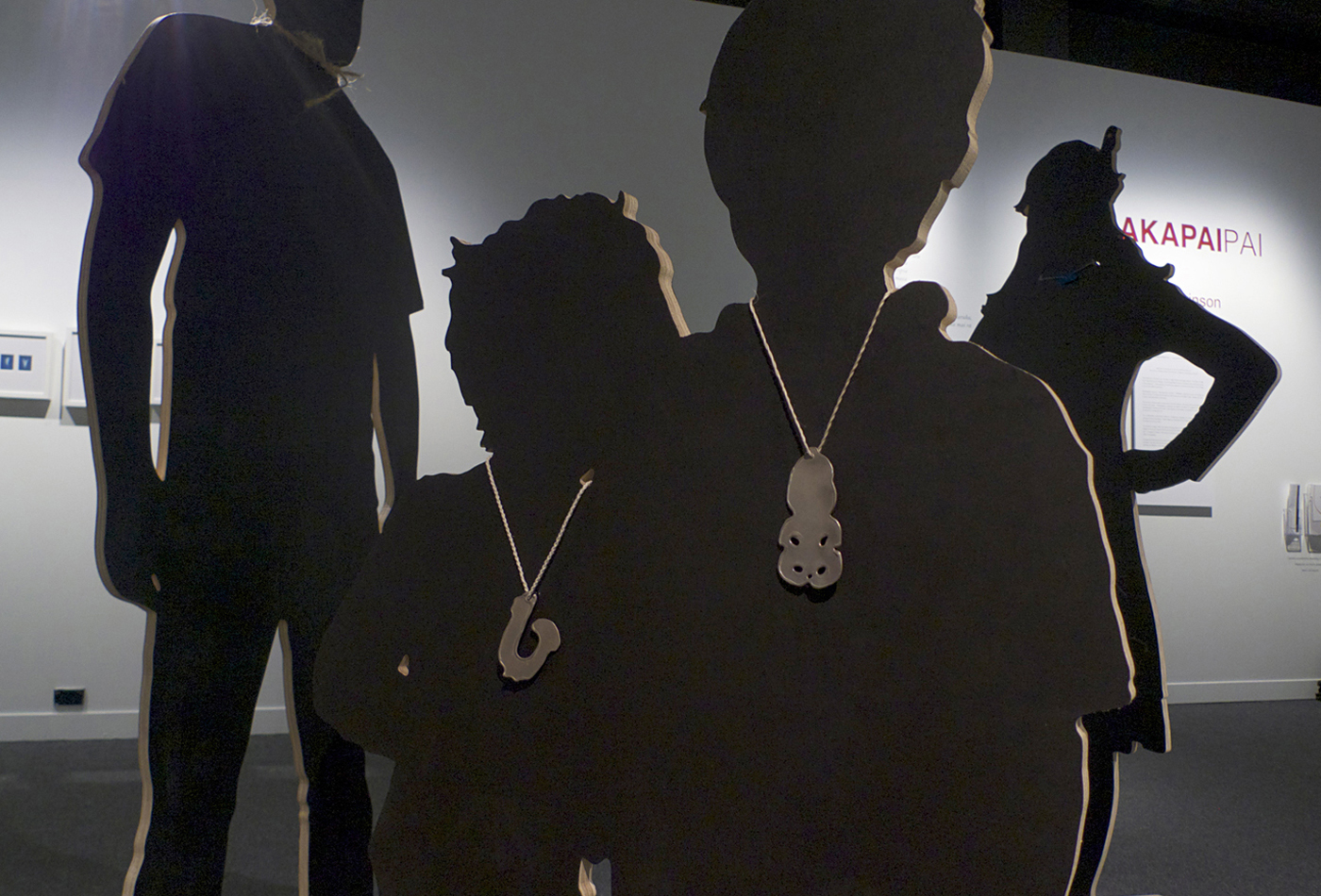
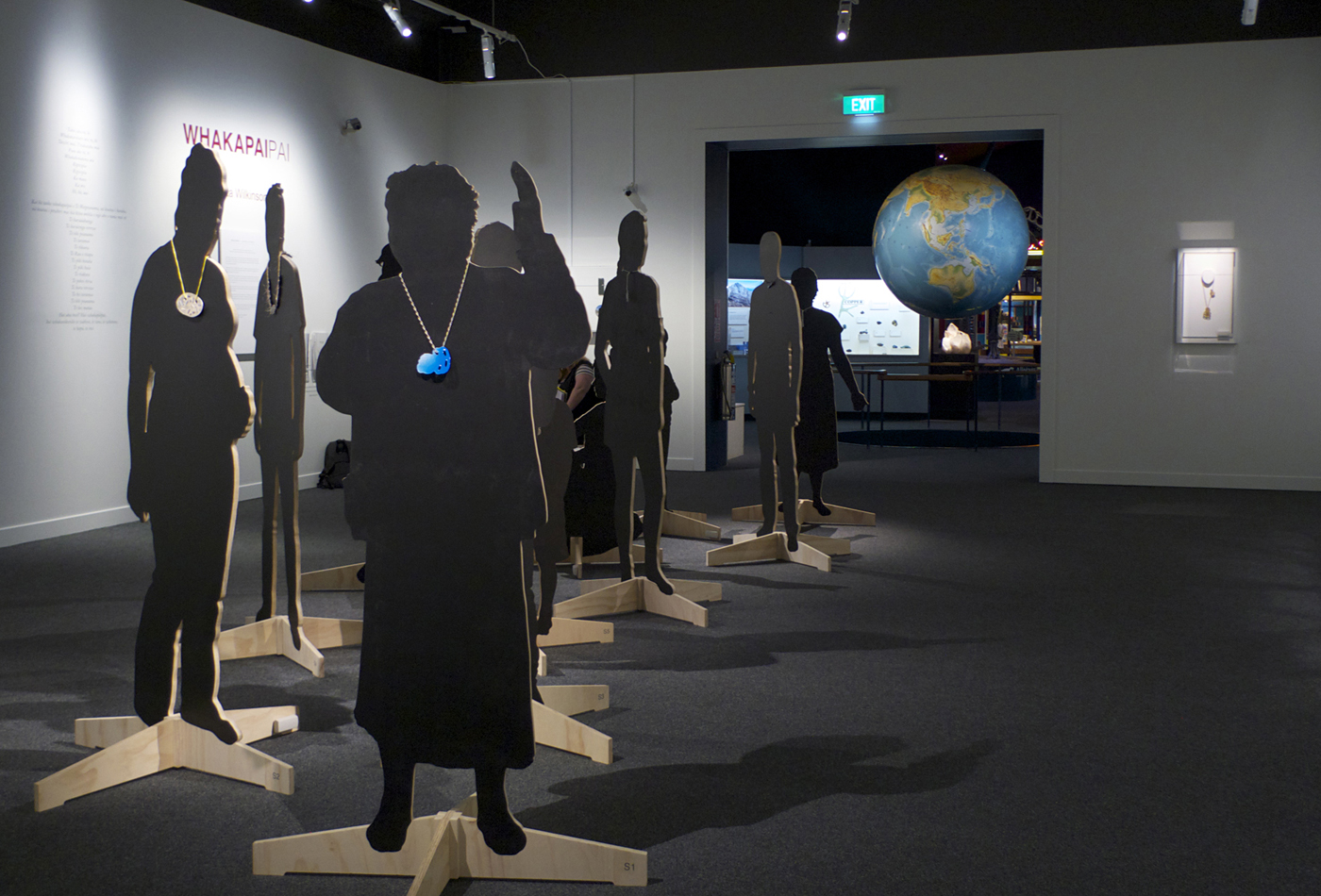


1 / 7
Areta Wilkinson
Whakapaipai: Jewellery as Pepeha
Hine-Āhua &
Huiarei (toggle)
2013
24 carat gold (Tai Poutini), 22 carat gold, legal ribbon, muka
85 x 60 x 2mm
$POA | ENQUIRE
2 / 7
Areta Wilkinson
Whakapaipai: Jewellery as Pepeha
Installation view
2014
$POA | ENQUIRE
3 / 7
Areta Wilkinson
Whakapaipai: Jewellery as Pepeha
Installation view
2014
$POA | ENQUIRE
4 / 7
Areta Wilkinson
Whakapaipai: Jewellery as Pepeha
Installation view
2014
$POA | ENQUIRE
5 / 7
Areta Wilkinson
Whakapaipai: Jewellery as Pepeha
Installation view
2014
$POA | ENQUIRE
6 / 7
Areta Wilkinson
Whakapaipai: Jewellery as Pepeha
Installation view
2014
$POA | ENQUIRE
7 / 7
Areta Wilkinson
Whakapaipai: Jewellery as Pepeha
Installation view
2014
$POA | ENQUIRE
Whakapaipai: Jewellery as Pepeha
Areta Wilkinson
01 Nov – 08 Mar 2015
At Canterbury Museum, in association with The National
Whakapaipai means to ‘make beautiful, to adorn’. Whakapai, meaning to revise, to improve, to bless, to set as in a table and strengthens these ideas to a core Māori value – taonga tuku iho, to pass to the generations that follow. The function of these works is made clear in the term pepeha, meaning to announce, distinguish, identify and locate. Whakapaipai – Jewellery as Pepeha, therefore, is located in whakapapa (genealogies), in whenua (the land), in the legacies of belonging, of sustenance, and in the spirit of continuum – taonga tuku iho.
Areta Wilkinson descends from Te Hapū o Ngāti Wheke and Ngāti Irakehu, sub-tribes of Ngāi Tahu, Ngāti Mamoe and Waitaha – the principal Māori tribes of Te Waipounamu (the South Island of New Zealand). In this exhibition, the artist translates the enduring knowledge of this heritage into a modern Māori worldview.
The contemporary adornments make an unexpected response to a series of silver bromide photograms and cyanotypes. These imaging processes produce negative silhouettes that record the space around an object. The resulting images reflect the spirit of taonga tūturu o Te Waipounamu (treasured historical objects of the South Island) that have touched the photosensitive paper and been exposed to light. A negative shadow of the object is achieved and a sense of ‘memory’ of and about the object is suggested. The artworks lift easily into the context of this time; of light and promise – taonga that are treasured, reviewed, and set forth as the artist’s personal journey of return. This work, Whakapaipai – Jewellery as Pepeha, is the vessel that carries these ideas forward.
Moana Tipa
Visit the Canterbury Museum website.
